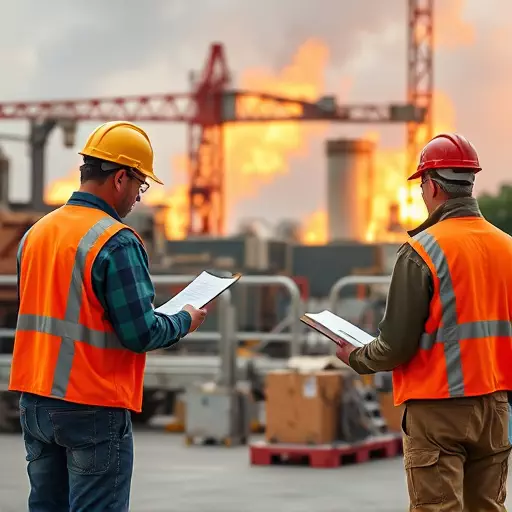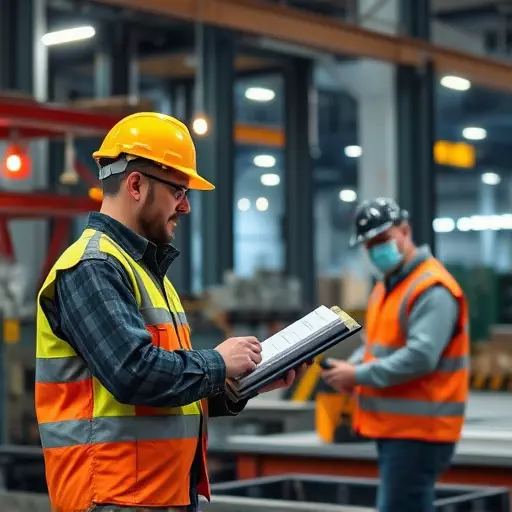Noise-induced hearing loss (NIHL) is a significant risk in industrial environments with high noise levels, but prevention through specialized safety training by industry experts can empower workers to identify and mitigate these hazards. This includes comprehensive hazard assessments using advanced methods like sound level measurements, risk assessment matrices, and interactive curriculum development for safety training focused on hearing conservation. Regular updates ensure employees are equipped to navigate daily noise exposure risks, fostering a culture of safety consciousness and long-term hearing health. By employing tailored industry training and advanced assessment techniques, organizations can implement targeted strategies beyond basic PPE, enhancing worker well-being and creating a quieter, safer work environment.
Noise control and hearing conservation are critical aspects of any industrial setting, aiming to mitigate noise-induced hearing loss (NIHL) and foster a safe working environment. This article explores essential strategies for creating a robust hearing conservation program. We delve into understanding NIHL, assessing hazards through advanced techniques, and designing comprehensive safety training curricula. Furthermore, it highlights the significance of specialized safety training tailored to the industry as a pivotal key to effective hearing conservation efforts.
- Understanding Noise-Induced Hearing Loss and Its Prevention
- Hazard Assessment Techniques for Effective Noise Control
- Developing a Comprehensive Safety Training Curriculum
- Specialized Safety Training: A Key to Industry's Hearing Conservation
Understanding Noise-Induced Hearing Loss and Its Prevention

Noise-induced hearing loss (NIHL) is a significant concern in many industrial settings where workers are exposed to high levels of noise on a regular basis. It’s a preventable condition, but raising awareness and implementing effective strategies is key. Specialized safety training by industry experts is an essential component of NIHL prevention. This training equips employees with the knowledge to recognize hazardous noise levels and understand their potential impact on hearing health.
Through hazard assessment techniques, organizations can identify and mitigate noise-related risks. Regular assessments ensure that safety measures are in place, such as providing personal protective equipment (PPE) like earplugs or earmuffs, implementing engineering controls to reduce noise at the source, and establishing safe work practices. Additionally, curriculum development for safety training should include interactive modules on hearing conservation, highlighting best practices for noise exposure management and encouraging open dialogue about hearing health.
Hazard Assessment Techniques for Effective Noise Control

Effective noise control begins with a thorough hazard assessment, which is a critical component of any specialized safety training by industry. This process involves identifying and evaluating sources of noise, their potential impact on workers’ hearing, and the suitability of existing control measures. Trained professionals utilize various techniques such as sound level measurements, time-weighting limits, and risk assessment matrices to pinpoint areas requiring intervention. By combining these methods, they can develop a comprehensive understanding of the noise environment and implement targeted strategies.
Safety training curriculum development plays a pivotal role in ensuring that hazard assessment techniques are accessible and applicable to all workers. These curricula should cover best practices for conducting assessments, interpreting data, and selecting appropriate control methods. Through interactive workshops, case studies, and hands-on exercises, employees can gain practical skills needed to identify and mitigate noise hazards effectively. Regular updates to training programs are essential to keep pace with advancements in hearing conservation techniques, ensuring that workers are equipped with the knowledge and tools to protect themselves in noisy work environments.
Developing a Comprehensive Safety Training Curriculum

In today’s industrial landscape, developing a comprehensive safety training curriculum is paramount to ensuring worker protection and hearing conservation. Specialized safety training tailored by industry is a game-changer in mitigating risks associated with noise exposure. This involves utilizing advanced hazard assessment techniques to identify potential dangers within specific work environments, be it a bustling manufacturing plant or a labyrinthine construction site. By understanding these hazards, trainers can design targeted programs that educate employees on proper hearing protection methods and safe working practices.
The process of curriculum development should encompass interactive workshops, hands-on demonstrations, and regular updates to keep pace with evolving safety standards and technologies. It’s not just about imparting knowledge; it’s about fostering a culture of safety consciousness. Effective training equips workers with the skills to recognize and mitigate noise risks, ensuring their hearing health and overall well-being in the long term.
Specialized Safety Training: A Key to Industry's Hearing Conservation

Specialized safety training tailored for the unique challenges of each industry is a cornerstone in hearing conservation efforts. This involves utilizing advanced hazard assessment techniques to identify noise sources and their potential impact on workers’ hearing. By understanding these risks, industries can implement targeted strategies that go beyond basic protective equipment. Safety training curriculum development should focus on educating employees about noise-induced hearing loss (NIHL) and its prevention. It includes teaching them to recognize high-risk areas, proper use of earplugs or earmuffs, and the importance of regular hearing tests.
Industries leading in specialized safety training empower their workers with knowledge, enabling them to actively participate in creating a quieter, safer work environment. This proactive approach not only mitigates NIHL but also fosters a culture where hearing conservation is a shared responsibility, ensuring long-term well-being for every employee.


